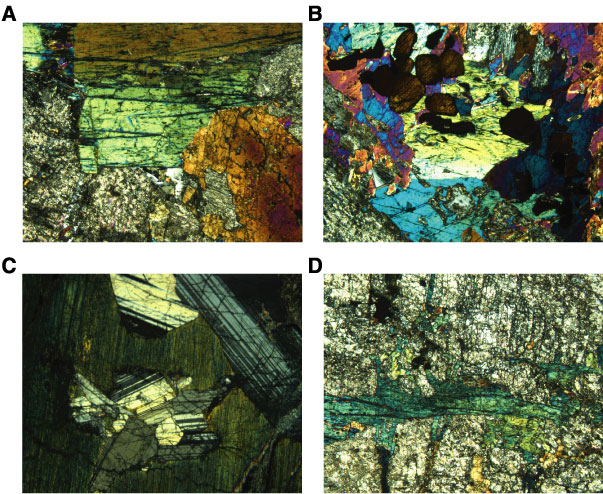
Figure F20. Photomicrographs showing gabbroic rocks from Hole 1271B. A, B. Sample 209-1271B-5R-1, 12–14 cm (cross-polarized light [XPL]: blue filter). (A) Euhedral brown amphibole grains in a matrix of altered plagioclase. Note that the upper grain is strained and so is not in complete optical continuity. Fresh plagioclase is preserved near the junction of the amphibole grains (field of view [FOV] = 5.5 mm; image 1271B_095). (B) Euhedral rutile grains (dark brown) included in, and at the boundaries of, small brown amphibole grains (FOV = 2.75 mm; image 1271B_096). C. Ophitic clinopyroxene enclosing subhedral plagioclase grains. Note how thin and laterally continuous clinopyroxene separates some of the plagioclase grains in the central cluster (Sample 209-1271B-5R-1, 5–7 cm) (XPL: blue filter; FOV = 5.5 mm; image 1271B_097). D. This brown amphibole grain has thin extensions into altered plagioclase, oriented orthogonal to the main amphibole grain. To the left of the field of view, the amphibole grain is massive and subhedral (Sample 209-1271B-5R-1, 24–27 cm) (XPL: blue filter; FOV = 5.5 mm; image 1271B_098).



![]()